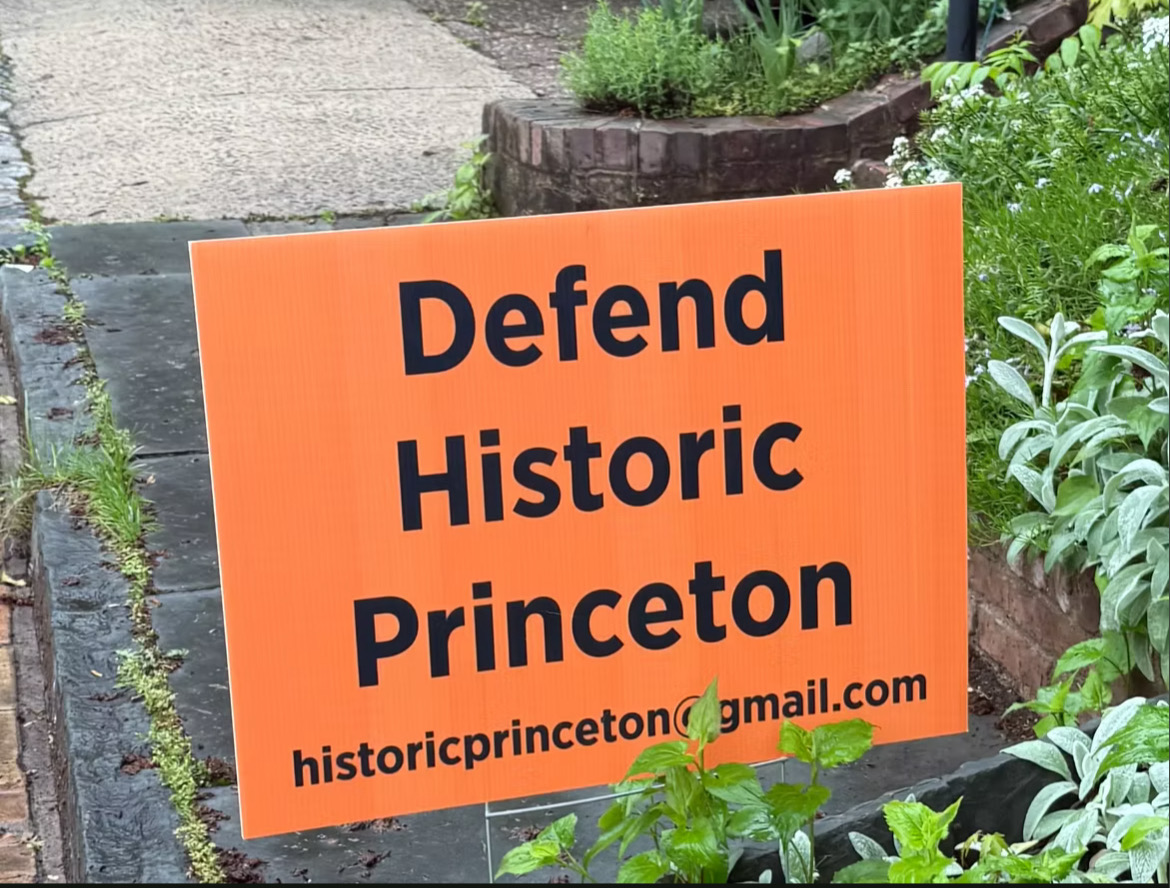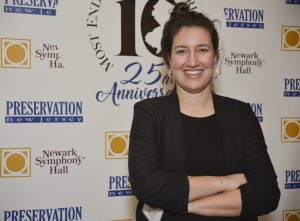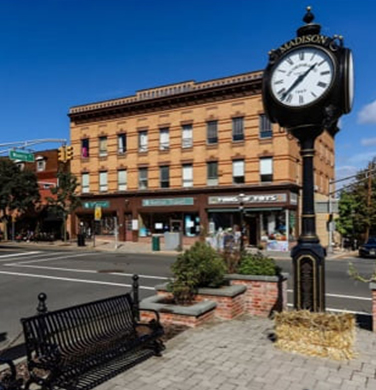The Princeton Theological Seminary is one of the nation’s oldest divinity schools and over the course of its history, it has been a battleground for the moral issues of the day.
Nowadays, the campus is the stage of a fierce debate over affordable housing that is dividing this small college town.
The seminary was founded in 1812 when it split from Princeton University and since then the school has seen incredible expansion. It began with a class of nine students held in the home of Dr. Archibald Alexander at 134 Mercer Street and now its campus is spilling into the neighboring town of West Windsor.
The original intent of redeveloping the school’s 4.5-acre property at Stockton Street and Hibben Road was to consolidate this sprawling campus. In 2018, the seminary planned to build dormitories on what is called the Tennant-Roberts-Whiteley Campus.
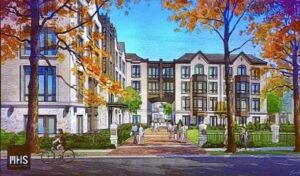
A rendering of the Stockton Street development. Credit: Marchetto Higgins Stieve
But something happened over the next year that caused the school administration to not only reverse course, but abandon the campus altogether, putting the site under contract with Herring Properties.
Despite several attempts to reach the seminary, Preservation New Jersey is still in the dark about what exactly happened. The school’s website, however, cites costs as the reason for the dramatic change in plans.
Although much of the seminary’s campus is located within the Mercer Hill Historic District, the site in question sits mostly outside those boundaries, with 92 Stockton Street within the district and the entire site within the Princeton Historic District. Without any laws on their side, preservationists could only petition the developer to save the three historic buildings that the campus was named after. But in 2022, Herring demolished the three buildings.
Nothing can be done to undo the demolitions. Instead, residents are turning their attention to the scale of the new development. In 2024, Herring unveiled a plan to build 190 units; the plan now sits at 238 units with 48 units set aside as affordable.
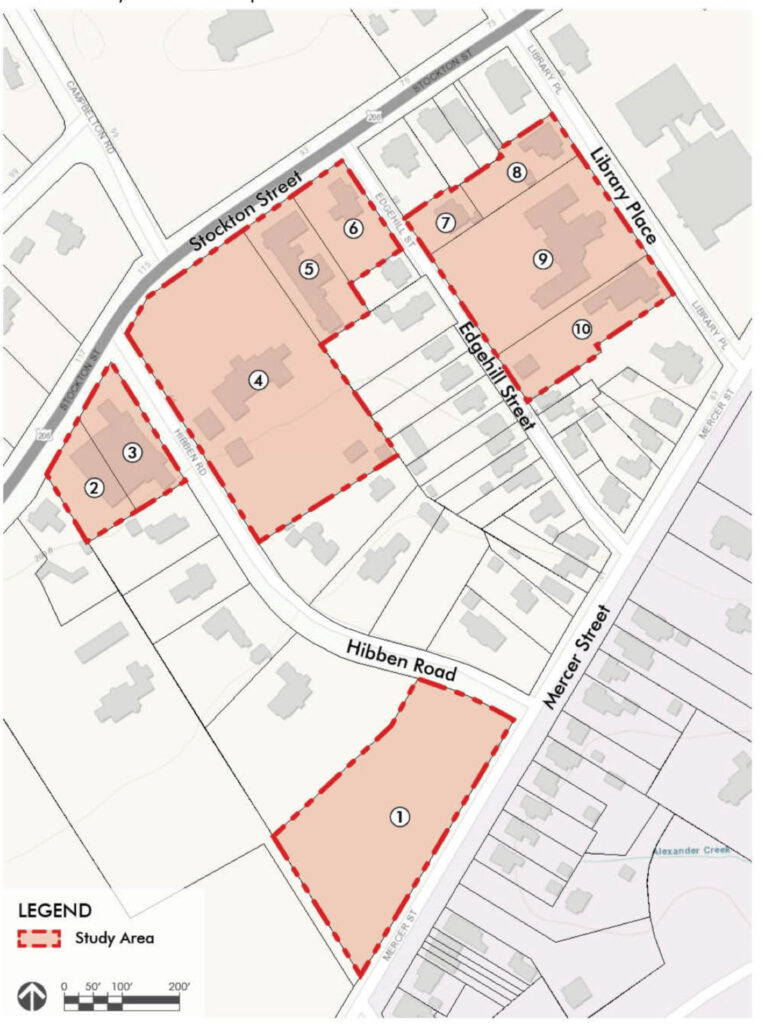
The site of the redevelopment zone.
Looming over all of this is the state’s affordable housing mandate — often called the Mount Laurel Doctrine after a New Jersey Supreme Court case — that requires municipalities to meet a certain threshold. Princeton is expected to build 276 units in ten years. The sentiment among public officials that, if the town doesn’t comply with this quota, worse consequences await.
At a community meeting in 2023, Council President Mia Sacks warned that the township could face legal action — known as a builder’s remedy lawsuit — and lose the chance to impose community benefit agreements on developers.
“I want to be candid with you — the municipality will lose the ability to negotiate for you the very benefits that you want with,” Sacks said. “We need to buckle down and focus on reality and not what we would like in theory in an ideal world — we don’t live in an ideal world.”
Adding an additional 200-plus homes to a neighborhood can vastly change — or some might say destroy — the look and feel of that community.
“They’re trying to impose a city-sized private housing development on the oldest residential neighborhood in Princeton,” said Sean Wilentz, Princeton University history professor.
Wilentz believes there is something disingenuous about the affordable housing debate. When residents examined the proposal, they found only a small portion of the proposal is affordable — 48 units. The remaining 190 are market-rate units. The growing criticism of the state mandate is that affordable housing is being used as a shoehorn to force a town to accept a luxury apartments complex where it shouldn’t belong.
“This is not affordable housing — it’s a red herring to make people seem like we’re racist NIMBYs,” Wilentz said.
The claim of racism that Wilentz referred to was an accusation that a local elected official, Councilman Leighton Newlin, leveled at Wilentz’s coalition called Defend Historic Princeton.
“What, and from whom, are we defending against?” Newlin asked in a letter to the editor published earlier this year.
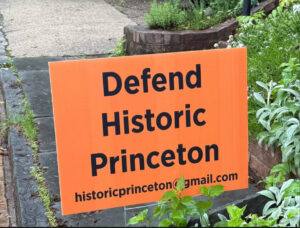
A Defend Historic Princeton lawn sign. Credit: Defend Historic Princeton.
One might think that the opinion of a Princeton historian should hold weight in a college town, but Wilentz’s academic accolades could not shield him from Newlin’s accusations that his group is upholding a racist “power structure” for opposing the Stockton Street development.
“They are part of the oldest bait-and-switch scheme in America,” Newlin wrote. “The surface looks polite and technical; the core is about power, privilege, and a refusal to share space.”
Wilentz is no stranger to being called racist. He was one of the early critics of Nikole Hannah-Jones’s “1619 Project,” which has become a foundational text of the anti-racism movement that flourished after George Floyd’s death. Wilentz has also challenged the current orthodoxy that the nation was founded on white supremacy and slavery in a New York Times op-ed.
He believes his critics use “racism” as a “cudgel,” sidestepping the actual arguments being debated.
“It’s become standard practice these days to label one’s critics casually as terrorists, antisemites, libtards, white supremacists, and more,” Wilentz wrote in response to Newlin’s letter.
He also questioned the impartiality of Newlin’s comments after it was learned that the councilman received campaign contributions from Herring’s firm.
More and more historians, preservationists, even environmentalists are pushing back on the state affordable housing mandate and how it is being used. In West Orange, the Wilf family is using a builder’s remedy lawsuit to destroy an old-growth forest and build a 496-unit apartment complex with 100 affordable units, despite a smaller version of the plan being denied in 2005. Wilentz’s group hired the same lawyer, Bruce Afran, as the West Orange group We Care who is trying to save the forest.
Interestingly, Wilentz is related to New Jersey Supreme Court Chief Justice Robert N. Wilentz, who issued the ruling in the 1983 Mount Laurel case, forcing developers to expand affordable housing, a legacy that has been tarnished, Wilentz claims.
The current Mount Laurel crusade is merely a trojan horse for luxury development, he said. “They present themselves as social justice warriors because they’re doing affordable housing,” Wilentz said. “We want more affordable housing — we just don’t want luxury housing.”
